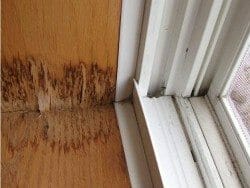Essential Sump Pump Maintenance – 6 Tips for a Dry and Safe Basement
Essential Sump Pump Maintenance Tips
Sump pumps are critical for keeping basements dry and protecting homes from water damage, especially in areas prone to flooding. However, owning a sump pump comes with the responsibility of regular maintenance to ensure it operates efficiently when needed. Here are six valuable tips every sump pump owner should implement to maintain their system’s reliability.
Tip 1: Regular Testing
The first step in ensuring the readiness of your sump pump is straightforward testing using a five-gallon bucket of water. By pouring water into the sump pit, you can activate the pump and confirm it’s working correctly. This testing is especially crucial in properties at high risk of flooding. The frequency of this check should increase with the likelihood of water-related emergencies.
Tip 2: Clean the Sump Pit
Over time, sump pits can accumulate debris, such as dirt and lint, which can obstruct the pump’s function. Regularly cleaning the interior of the sump pit is essential to prevent clogging. For those who prefer not to manually clear out debris, using a shop vacuum can be an effective and less labor-intensive method. This is particularly important in sumps that do not operate frequently, as stagnant debris accumulates more significantly between uses.
Tip 3: Battery Backup Systems
Incorporating a battery backup system can significantly enhance the reliability of your sump pump setup. A backup system ensures operation during power outages or when the primary pump fails to manage the inflow of water. Investing in a battery backup system is a proactive measure that can prevent costly and inconvenient flooding, offering peace of mind to homeowners who experience regular water ingress issues.
Tip 4: Know Your Equipment
All mechanical systems are subject to wear and tear, and sump pumps are no exception. Being aware of the type of sump pump you own, its parts, and its operational status is crucial. Since pumps can fail unexpectedly, understanding your system’s specifics can help you react swiftly to replace or repair parts as needed, avoiding potential emergency situations.
Tip 5: Maintain System Knowledge
Beyond knowing the specifics of your sump pump, broader knowledge of your entire sump system’s operation can save you money and prevent exploitation by service professionals. Keeping all related documents, such as receipts and warranties, in an accessible place (e.g., a sealed bag hung near the sump) is also advisable. This organized approach facilitates easier maintenance and quicker resolution of issues when they arise.
Tip 6: Install an Alarm System
Installing an alarm system offers an additional layer of security by alerting you to potential pump failures before they result in flooding. These alarms can be installed near the sump or elsewhere in your home, depending on convenience and necessity. While standard alarms are sufficient for systems with battery backups, opting for an alarm with its own battery backup is recommended for systems without. Regular testing of the alarm ensures it will function correctly in the event of an emergency, providing that critical early warning.
Proactive maintenance of your sump pump is essential for ensuring its reliability. Regular testing, cleaning, and knowledge about your system’s components and backup options can prevent the inconvenience and cost of basement flooding. Furthermore, adding an alarm system can alert you to potential issues before they escalate, allowing for timely interventions. Taking these steps will not only extend the life of your sump pump but also help maintain a dry and safe basement environment.







